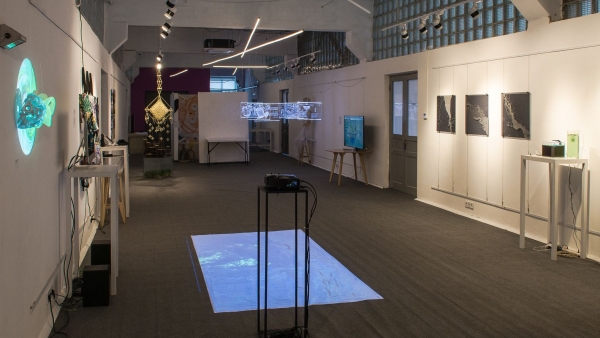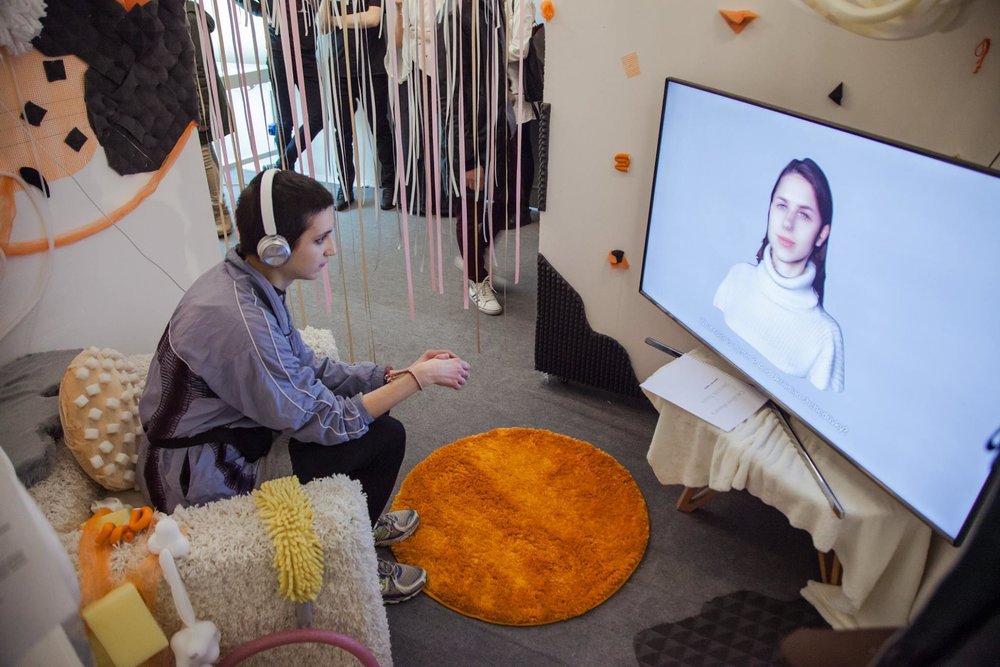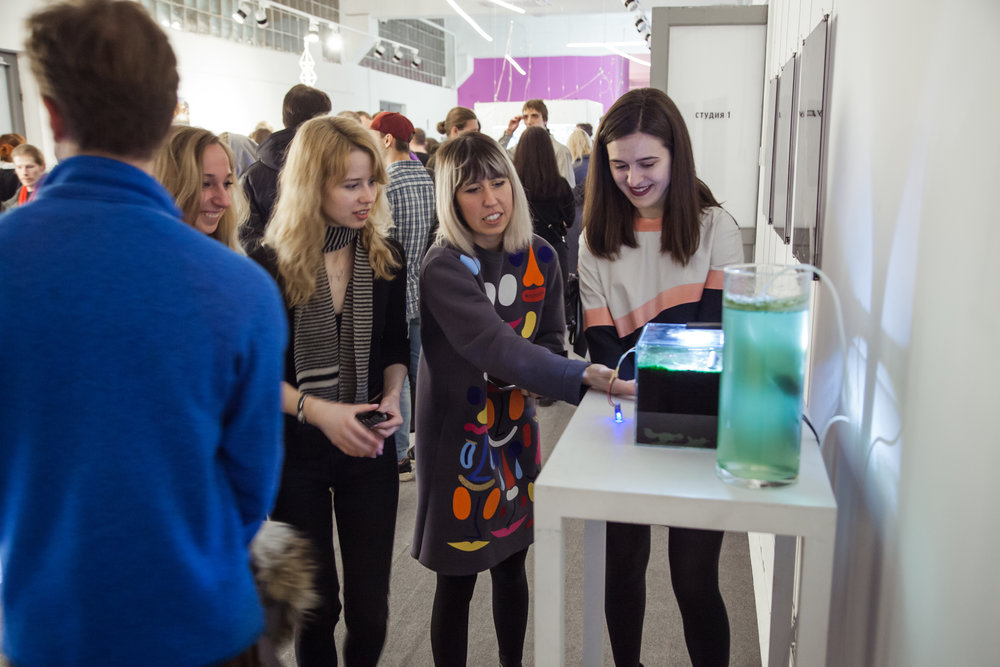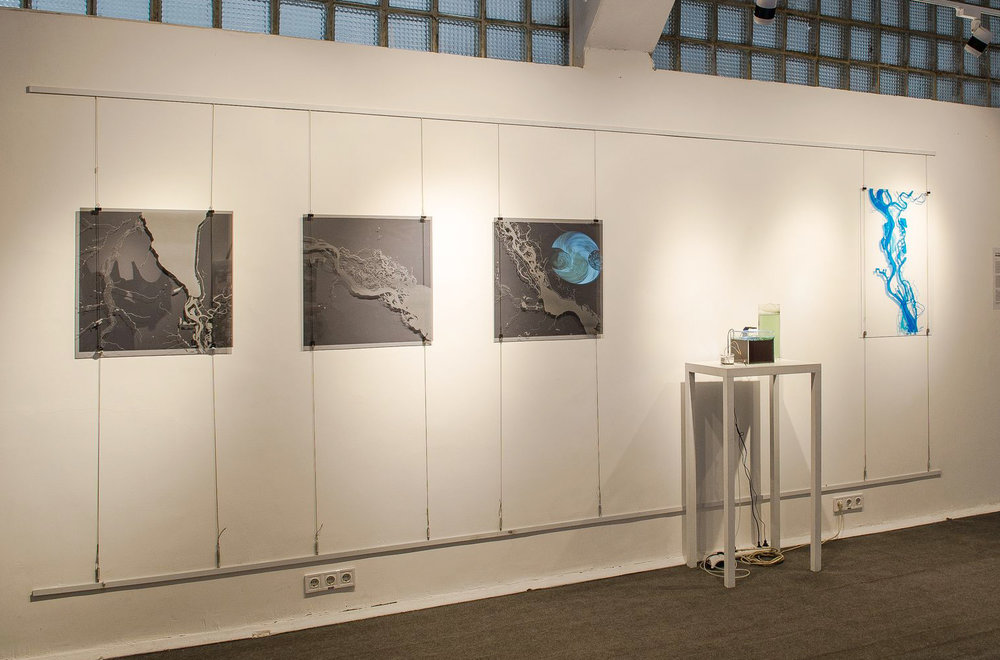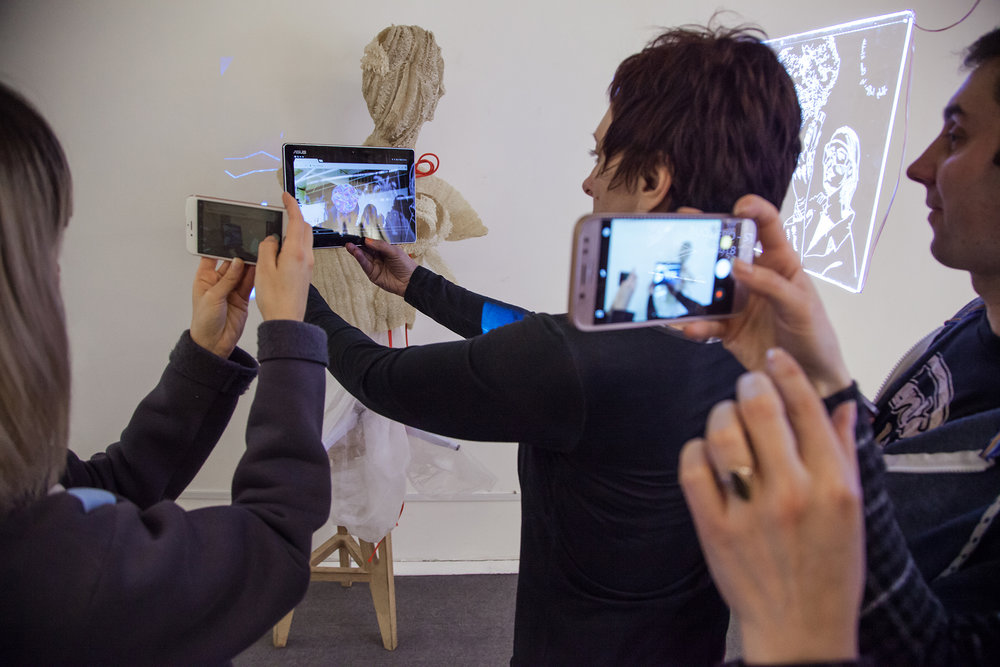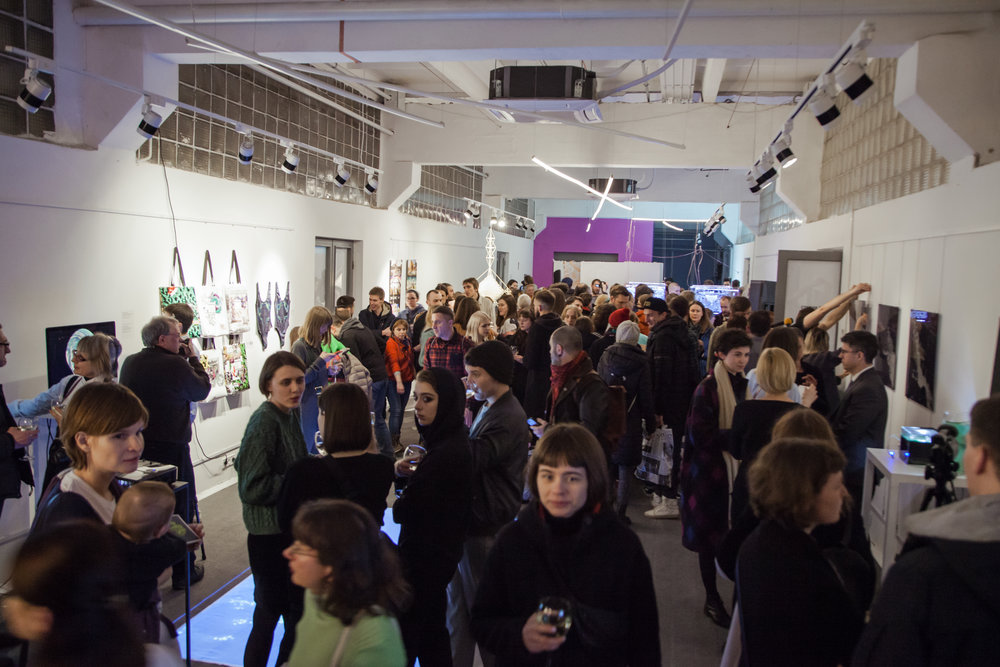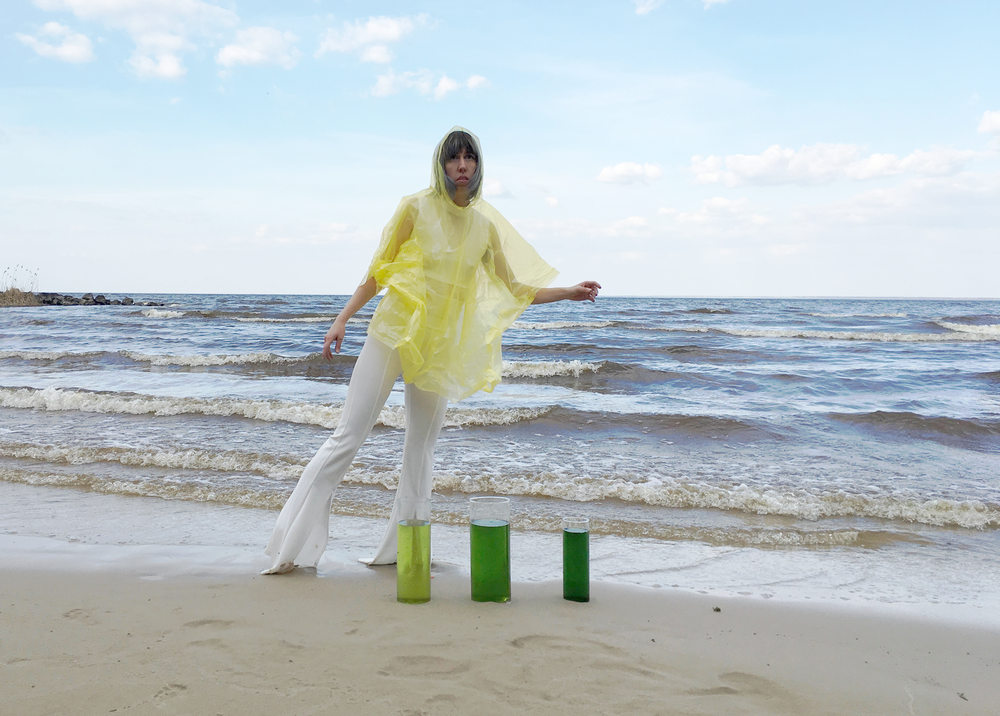It’s been an incredible month at IZOLYATSIA, and I can’t believe how far we’ve come! March 29th was the opening reception for Emergent Tributaries at IZONE, showcasing collaborative works from the community groups as well as myself. The name of the exhibition is in reference to the Dnipro River, which has historically played a central role in shaping the landscape and cities alongside it in Ukraine: as an ancient trade route for goods and supplies, a place for cultural exchange and gatherings, and a provider of energy through hydroelectricity.
I chose the Dnipro River as an entry point into this exhibition — as a meeting place of cultural exchange for a visiting artist and curator from America working at IZOLYATSIA, which is right on the riverbank. I also chose it metaphorically for its ecological network, which connects Ukraine through its many tributaries, as this exhibition has done the same for artists gathering from different parts of the country.
Now linked with digital technologies in a similarly networked fashion, Emergent Tributaries reimagines the present and future of Ukraine through the eyes of these artists and their collaborative new media works. Along the Dnipro riverbanks as well as in other physical and digital spaces, they have refigured cultural identity, personal identity, and our relationship to ecological systems, technologies, our bodies, and the spaces our bodies inhabit through speculative design and design fiction.
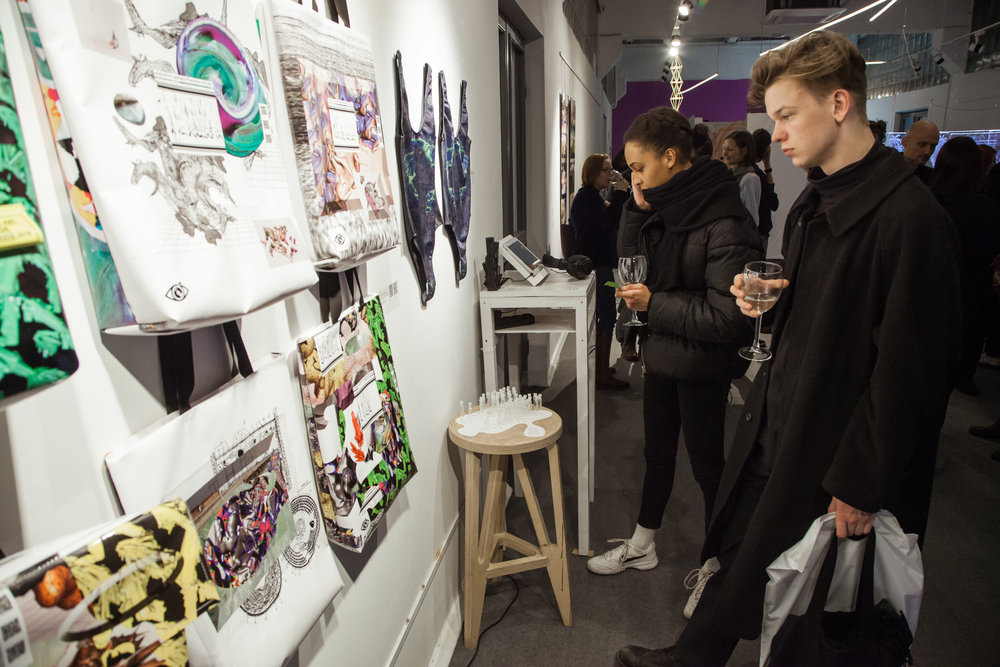
There were four main collaborative projects in the exhibition:
The Waters Come Into My Soul examines water pollution in Ukraine, particularly along the Dnipro River. The industrial run-off and overabundance of phosphorus, nitrogen, and phosphates causes active reproduction of cyanobacteria that spurs the “Dnipro blossoming” phenomenon, which negatively affects the flora and fauna of the river as well as the physical and psychological state of the people living nearby. The group investigated this phenomenon through digital textile prints, algorithmic video, projection, 3D prints, microscopy video, and sound.
The Waters group: Julia Beliaeva, Elena Klochko, Bogdan Moroz, Anna Prokopets (Umka Estebanovna), Iryna Proskurina, Alla Sorochan, Olga Tereshchenko, Oksana Chepelyk
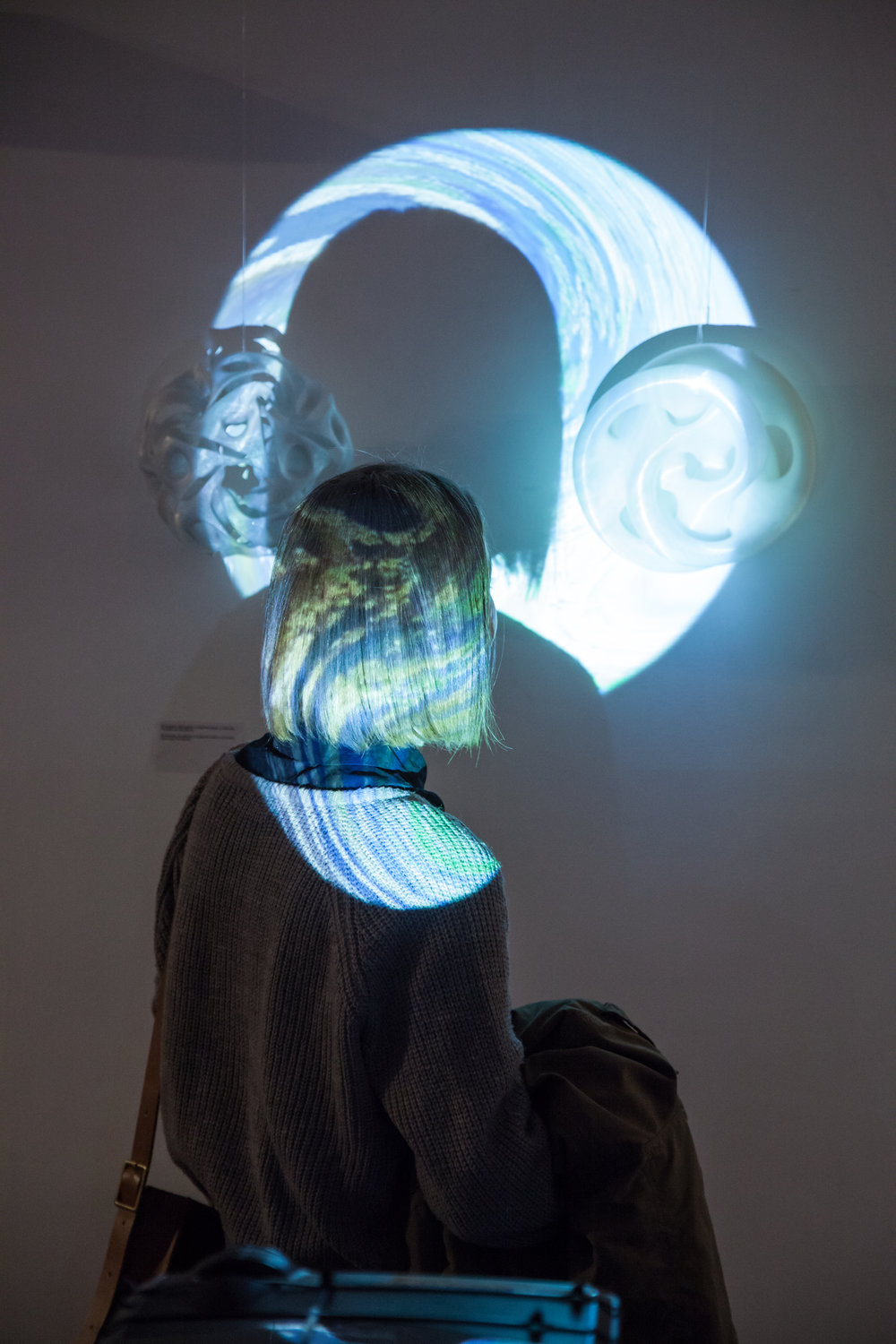
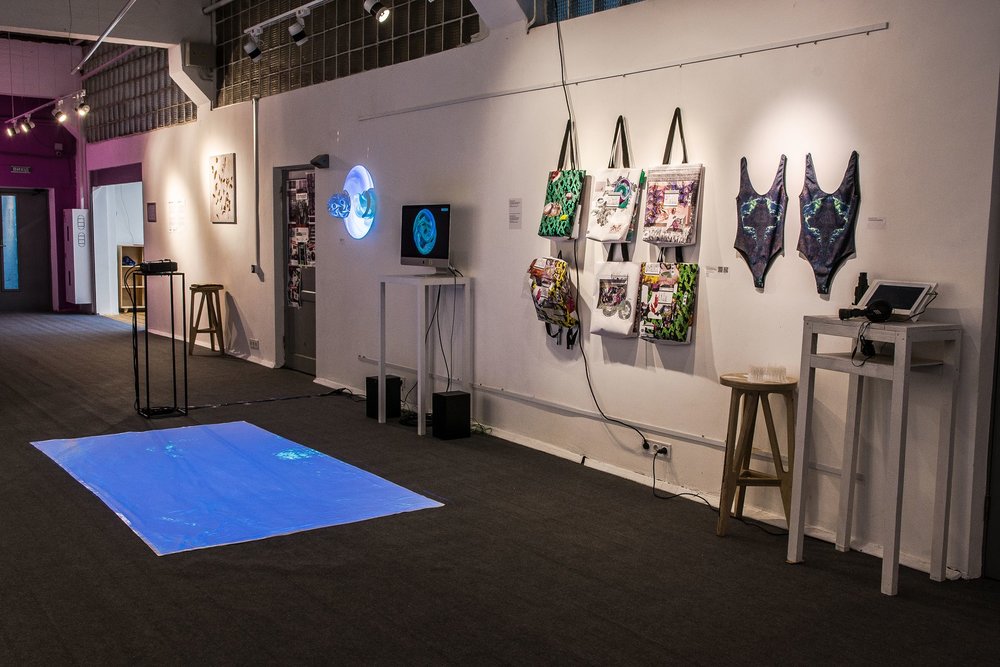
Island Ї is a speculative floating artificial island on the Dnipro River. It is an open university and a scientific laboratory — a platform for artistic and scientific projects. Island Ї is a rhizome of diverse ideas, styles, and decisions that represent the diversity of Ukrainian identity. It combines harmoniously what seems like an insoluble contradiction: an academy of sciences, an erotic education center, self-regulating sails, and architecture with biomimetic forms achieved through futuristic technology of adaptive and regenerative growth.
Island Ї moves freely along all the rivers of Ukraine, to all the cities and remote towns and villages, influencing people and changing society through forms of nonlinear and horizontal interaction.
Mincult group: Yurii Efranov, Elena Klochko, Yaroslav Kostenko, Anastasiia Loyko, Mykhailo Rozanov Kateryna Shyman, Krolikowski Art
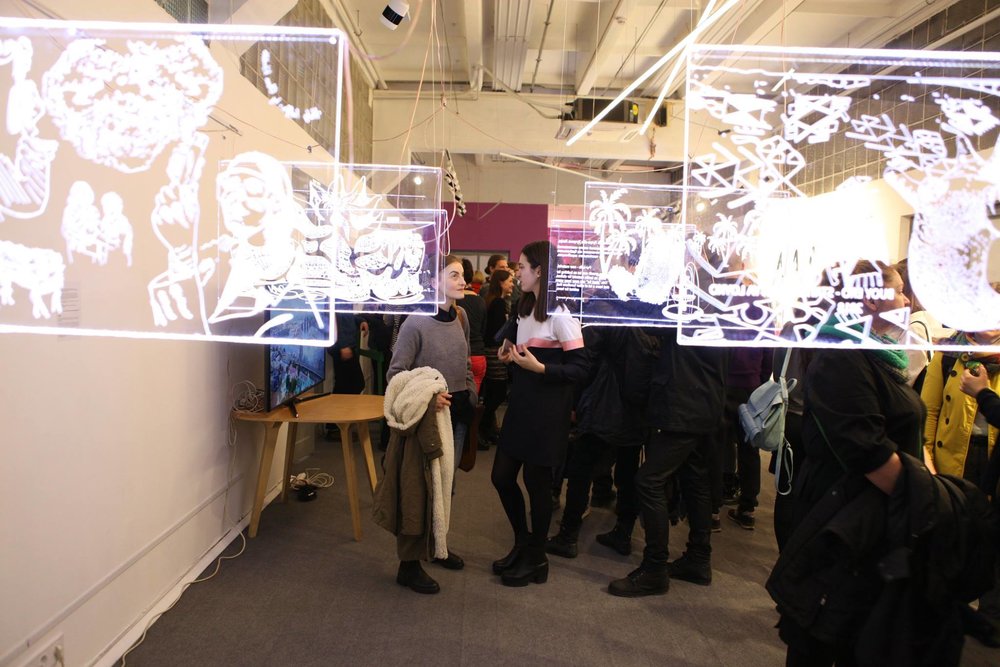
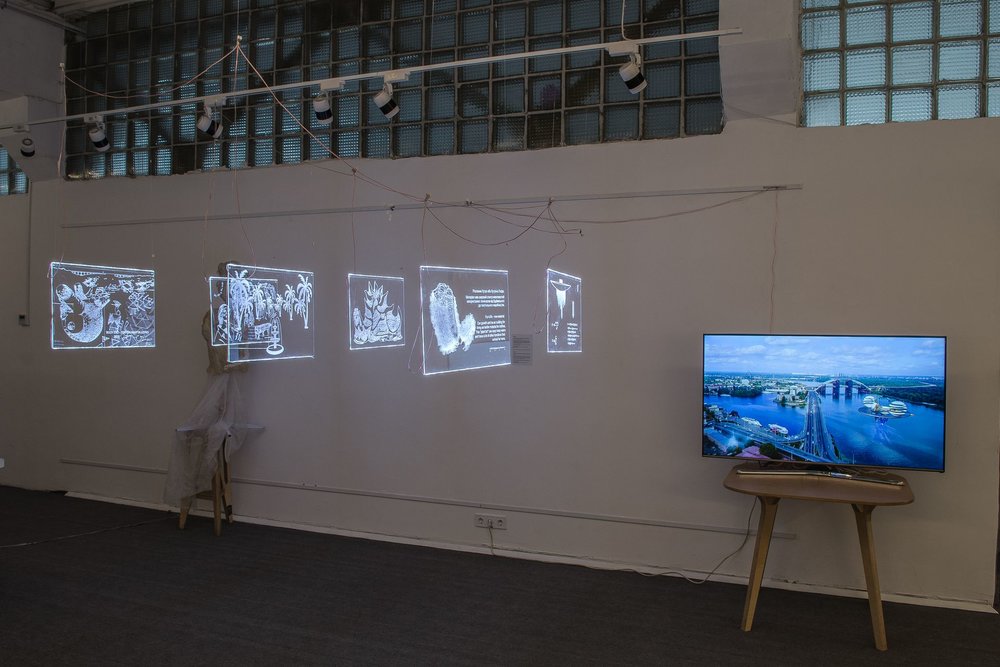
Session Room involves ASMR and Ukrainian identity, focusing on the lack of boundaries between public and private space. This project features a zoned, partially enclosed space in which the viewer can feel solitude and simultaneously experiment with various tactile and auditory elements including 3D video portraits of the artists and their voices.
MEDITATOR group: Alina Borysova, Anna Kakhiani, Anna Korniets, Irina Kostyshyna, Alyona Mamay, Oleksandr Manukyans, Hanna Shumskam, Oleksiy Yaloveha
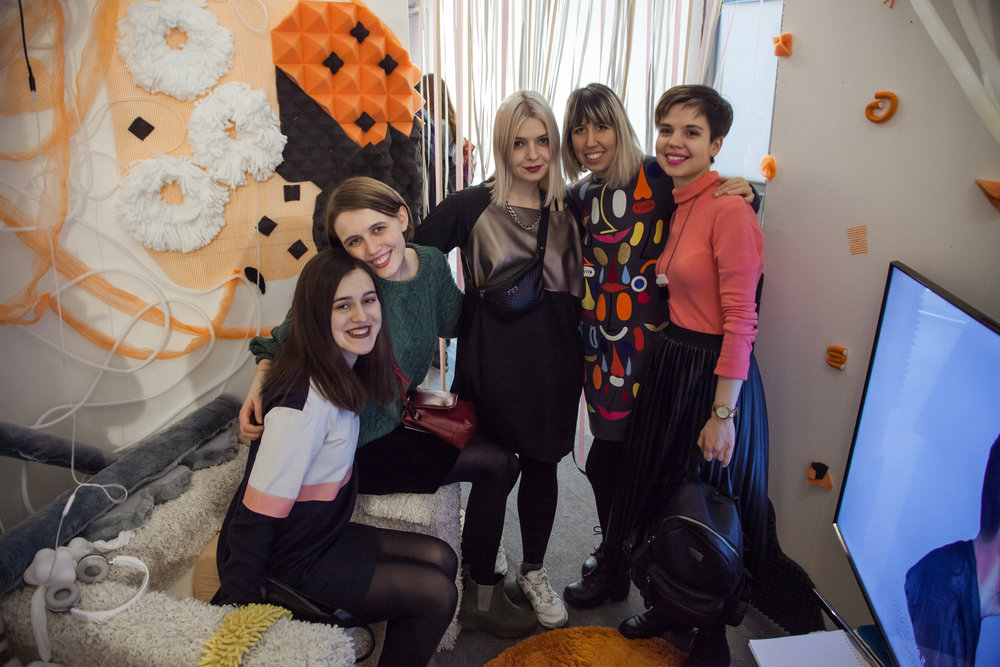
Spidertopia explores a theoretical renaissance of Ukrainian identity free from territorial invasions. Using the language of traditional “pavuk” or “spiders,” module-like elements of Ukrainian home decor which pre-dates Christianity, the project applies it to a utopian world. But within that high-tech world, we notice something strange… Spidertopia highlights a peculiar Ukrainian attitude on the verge of comedy, tragedy, and irony that has seemed to persist. It is an exercise in self-observation: times are changing, but do we change with them?
SPIDERTOPIA group: Ivanka Borodina, Olha Vashchevska, Serhii Nizhynskyi, Maria Proshkowska, Bogdan Seredyak, Olga Synyakevych
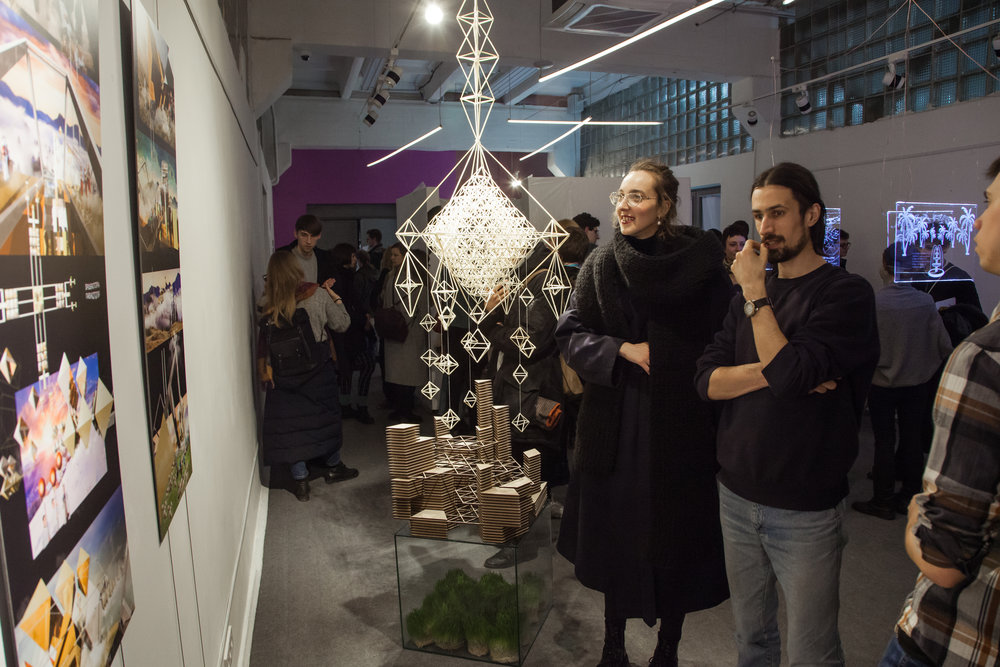
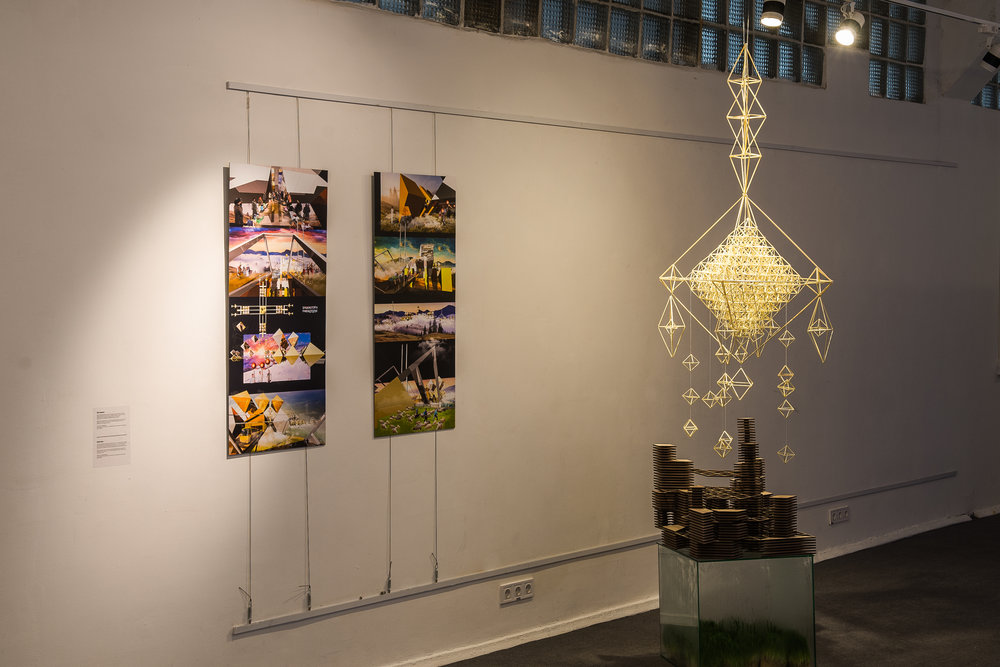
For my personal project, I focused on the “Dnipro Blossoming” phenomenon. I wanted to explore material transformation through the lens of the Dnipro, and created intimate portraits of the river in acrylic, transferring its boundaries to become a central focus to address this topic, layering and juxtaposing man-made tributaries with ancient and natural flows.
Using a water battery with polluted water from the Dnipro and speculative algal bioreactors, I consider converting cyanobacteria and polluted water in the Dnipro into energy; in this case, for illumination. A reframing of the river helps us to reconsider our impact on it and future methods of harmonious collaboration with it, other ecologies, and non-human species.
Another project I did in collaboration with participants and my partner Donald Hanson was ARUA.xyz, an augmented map containing digital sculptural works by multiple Ukrainian artists featured in this exhibition. It is an online browser-based project, and also an intervention of space, a rewriting of present geographies, a disruption of physical and digital borders, and an intentional positioning of new cultural digital monuments throughout Ukraine.
For this exhibition, these virtual sculptures can be seen in the gallery, but they can also been seen at different mapped locations via smart devices. My hope is that ARUA.xyz will live beyond this exhibition to include additional works by other artists from Ukraine.
Over 200 people attended the opening exhibition and the showcase lasted two weeks. Following the opening, we had a panel review where all the groups presented their work and their future plans to evolve their projects over time. Arts and culture professionals from Kyiv gave critical feedback on all of the works and helped teams formulate actionable plans for their development and expansion into other communities.
It’s been an intense and transformative month — I had no idea what we would make together when I arrived in Kyiv, but I couldn’t have imagined a more tremendous outcome. I am so proud of all of the beautifully crafted and meaningful works made by everyone in this program, and feel blessed to have met so many wonderful people during this time, and to have made so many new friends.
I am immensely greatful for the experience I had in Ukraine with IZOLYATSIA and with all of the talented artists I got to work alongside. I learned so much, and feel my perspectives on artmaking, teaching, and collaboration have really shifted during this time. I truly hope for more international opportunities to teach and work with communities as it really fosters true cultural exchange and dialogue.
I plan to continue my work with the Dnipro River, which has now grown into a collaboration with three of the AAI participants, and my plan is to return to Ukraine in July to develop this project further. I am sure all of these projects and connections incubated through AAI will continue to grow in the months to come, and three of the projects already have potential future showcases and exhibitions on the horizon later this year.
